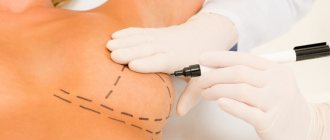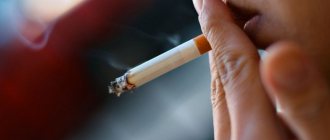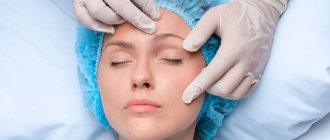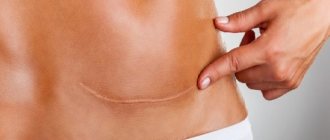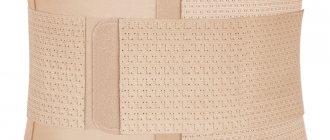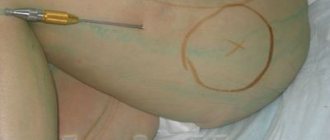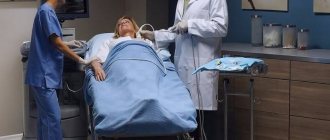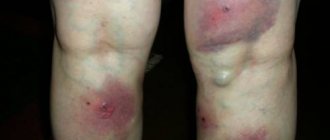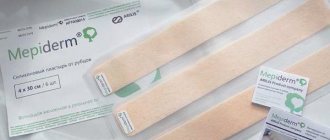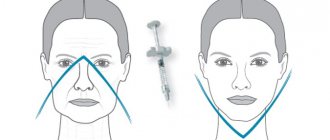January 18, 2021
In medicine, sometimes you have to make a choice in favor of saving the patient's life, sacrificing its quality in the future. From a rational point of view, this approach seems reasonable, but not everything is so clear from the patient’s point of view. For example, for a woman diagnosed with breast cancer, the decision to remove her breasts (mastectomy) is associated with deep feelings about the loss of femininity and sexuality. As a result, an operation that is effective from an oncological point of view has serious psychosocial consequences - personal life worsens, the risk of depression, anxiety disorders and even suicide increases. How to solve such a serious dilemma?
Already more than 100 years ago, the first attempts were made to surgically restore (reconstruct) the removed mammary gland. To date, the possibilities of plastic surgery contribute to a woman’s positive decision in favor of radical treatment and to prevent disorders in her personal and social life. Today I have prepared for you a photo report of a breast reconstruction operation by installing an implant in a patient after a mastectomy, and in the next post you will see a continuation of this operation, but on a healthy breast for the purpose of its correction (mastopexy).
Why is it important to follow all recommendations in the postoperative period?
The correct selection of techniques and implants, careful preparation for surgery and skillfully performed intervention will provide only part of the success. The appearance of the breast after full recovery largely depends on how the rehabilitation after mammoplasty goes. Compliance with all doctor’s recommendations will ensure:
- minimal risk of complications;
- beautiful shape and symmetry of the mammary glands;
- correct position of the implant;
- invisible scars even when located around the areola;
- minimum pain and other unpleasant sensations.
IMPORTANT! The recovery time for the body depends on the type of mammoplasty. If a lift or reduction surgery has been performed, the tissue will return to normal faster. Breast augmentation using implants requires more recovery time as the body must get used to the foreign body.
What are breast implants?
A breast implant is a medical device that is placed under the breast or pectoralis major muscle to enlarge, reconstruct, or create an aesthetically pleasing breast shape.
Breast implants may contain silicone, saline, or another compound.
There are three main types of breast implants:
Saline implants are filled with sterile saline, which is simply sterile salt water. The solution is contained inside a silicone shell. These implants can be filled with varying amounts of saline. This affects the sensation experienced when pressing on the mammary gland; it can be either softer or harder, at the request of the patient, in addition, different densities will determine the different shape of the mammary gland.
If the saline implant is damaged and leaking, the solution will not cause any harm to the patient, since the saline solution is natural for the body and will simply be absorbed by the body without residue, the only negative is that the implant will have to be changed since the volume of the mammary gland will decrease.
Silicone gel implants consist of a silicone outer shell filled with silicone gel. If a silicone implant leaks, the gel will either remain in the shell or end up in the breast implant pocket. And it will not spread throughout the body. Modern implants do not spread even if the shell is damaged. Currently, these implants are the most commonly used.
Alternative composite implants are rarely used and may be filled with either biodegradable material, soybean oil or some other material.
First week of rehabilitation
The patient wakes up in a comfortable room at the GALAXY Beauty Institute. The first day you must remain in the hospital under the supervision of medical personnel. Strict bed rest with minimal physical activity is required.
If recovery proceeds at a normal pace, discharge occurs the next day after surgery. The decision on this is made by the surgeon after a thorough examination. The patient is taught the rules for caring for sutures, prescribed painkillers, antibiotics, antiseptics for treating the wound, and other drugs can be added if necessary.
The first days at home should also be spent in peace. At this time, a woman may be bothered by a slight increase in temperature, swelling of the tissues and pain in the chest area. Doctors at the GALAXY Beauty Institute will give detailed instructions on what and how to take in this situation.
Bruising and swelling are normal tissue reactions to surgery. As they recover, their severity will decrease.
IMPORTANT! It is necessary to come to the clinic for an appointment to check the condition of the stitches and dressings as often as the attending physician advises.
If suture removal is required, it is carried out 7-10 days after the intervention. 2 weeks after the operation, you can go to work if it does not involve significant physical activity.
Mammoplasty: rehabilitation by day
The first thing you need to understand: although plastic surgery refers to aesthetic medicine, it is nevertheless surgery. Therefore, mammoplasty should be treated not only as an operation that helps make the breasts beautiful and the figure more harmonious, but also as a serious intervention. Accordingly, the day-to-day recovery after mammoplasty will be similar to recovery after a “traditional” surgical operation.
1 day.
Upon completion of the operation, the patient is transferred to the recovery room. There her condition is monitored by an anesthesiologist. After 1–1.5 hours, the patient is transferred to a regular ward, where she can rest after the operation, but will be under the supervision of medical personnel. At the same time, drug treatment begins. It includes painkillers that help eliminate discomfort in the operated area. Antibacterial drugs can also be used, the purpose of which is to prevent possible complications. Even in the operating room, after sutures are applied and processed, the patient is put on compression garments pre-selected to size. It provides reliable fixation of the breast and prevents its displacement. You need to wear it constantly for a month, even during sleep, taking it off only for hygiene procedures.
1–4 days.
Hospital stay is usually limited to one day. Before discharge, the patient is given a memo that contains all the recommendations for the correct completion of the recovery period. If this is necessary, the doctor conducts an additional consultation. For 3-4 days after mammoplasty, any physical activity should be avoided - it is advisable to spend this time observing maximum rest. More or less pronounced pain and discomfort are felt in the mammary glands, which are natural for any surgical intervention. But these symptoms are alleviated and even completely eliminated with the help of medications prescribed by a doctor. In addition, there may be a slight increase in body temperature, usually between 37.0–37.5 °C.
3–4 days.
During this period, swelling of the breast tissue becomes most noticeable. This is a natural reaction of the body and should not cause concern. In addition, you should not be afraid of the “strange” appearance of the breasts - the shape and size of the mammary glands can be changed by swelling to a greater or lesser extent, but in this period it is too early to draw conclusions about the results of the operation. Swelling may slightly increase discomfort as it makes it difficult to move your arms. This symptom may persist for several weeks, but gradually its severity will decrease. It is important to know that swelling can intensify during sports, at high ambient temperatures, etc. Therefore, it is necessary to carefully follow recommendations for limiting physical activity, avoid visiting the sauna, avoid being in direct sunlight, etc.
5–6 days.
At this stage, the pain hardly bothers you or bothers you very little, which does not require taking painkillers. During this period, you can gradually return to your normal life. But the key word is still “gradually.” For another 4-5 weeks, you need to exclude any loads that involve the muscles of the upper shoulder girdle and chest. Heavy lifting, active sports and similar types of physical activity should not be allowed. And the “sleeping on your back” rule still applies - it will be relevant for 2-3 weeks after the operation.
1 Week.
Seven days after mammoplasty, the time for the first visit to the doctor. There will be four in total, but the first visit is the most important and should not be missed under any circumstances. During the consultation, the surgeon will assess the degree of healing of the sutures, the position of the endoprostheses and other criteria by which a conclusion can be made about the quality of tissue restoration. A conversation is also held with the patient, during which the doctor can adjust or discontinue medication treatment, as well as give additional recommendations necessary in a particular case.
2 weeks.
At this stage, the patient has already become accustomed to the “new” breast, the pain has disappeared, and compliance with the restrictions recommended during the recovery period no longer causes difficulties. Fitness classes, visiting the pool, solarium and sauna are still prohibited, but to maintain physical fitness you can take walks without any restrictions.
1 month.
The next examination by a surgeon is carried out in order to both assess the progress of recovery and adjust recommendations. So, if the patient has followed all the rules for undergoing rehabilitation and healing is progressing successfully, the doctor may allow you to remove the compression garment while sleeping or remove other restrictions. But it is important to understand: this depends on the characteristics of the mammoplasty performed - for example, with a significant breast enlargement, restrictions may last longer than with a breast reduction or breast lift.
2 months.
By this time, it is already possible to draw the first conclusions about the results of the operation. The swelling completely disappears or decreases to almost imperceptible, the discomfort is no longer a concern, and at the next visit to the surgeon the patient can receive permission to play sports. Of course, subject to moderation and gradualism. From this period onwards, life almost completely returns to normal, with very few exceptions. It is still necessary to avoid stress on the upper shoulder girdle and chest muscles, thermal procedures (visiting a bathhouse, sauna, taking a hot bath, etc.) and avoid mechanical impact on the tissue of the mammary glands - massage, rubbing the chest with a washcloth and similar actions will still be prohibited a few months.
Compression garments after mammoplasty
Wearing special compression garments is one of the most important conditions for successful rehabilitation after breast augmentation. It is put on immediately after surgery and worn for 1 month. This allows:
- reduce the risk of seams coming apart;
- form thin, invisible scars;
- ensure a neat breast shape after completion of rehabilitation;
- accelerate the resorption of swelling and bruises;
- evenly distribute the load on the neck and spine.
Surgeons at the GALAXY Beauty Institute independently select underwear for the patient. It is included in the cost of the operation and meets the following criteria:
- provides comfort in any position;
- allows the skin to breathe;
- absorbs moisture;
- looks neat under clothes;
- easily fastened by the patient herself.
In the first 4-5 weeks, a compression bra is worn constantly. After about a month, you can replace the compression garment with a regular bra without wires, which provides good support for the mammary glands. The exact timing depends on the specific operation and the individual characteristics of the body.
What risks might this operation have?
Any surgical procedure increases the risk of sudden death from myocardial infarction, stroke, or thromboembolism during or immediately after surgery. But, fortunately, such complications are extremely rare. And in our clinic there is all the modern resuscitation and anesthesiology equipment that minimizes these risks to almost zero.
Some of the risks and complications associated with breast augmentation are:
- Painful mammary glands
- Inflammation of the mammary gland
- The sensation in the chest and nipples may temporarily change or become more or less pronounced
- Implant rupture
- Bleeding
- Fluid accumulation (seroma)
A specific complication of this operation is capsular contracture - in which a thick capsule is formed around the implant. Which can deform the mammary gland, or make it extremely painful and dense. During your consultation, the surgeon will tell you in detail about this complication and how to avoid it.
In addition, even cosmetic stitches can become red, thick and painful, or, conversely, flat and wide. This may lead to repeat surgery to remove such scars.
Limitations after mammoplasty
Restrictions after mammoplasty last from 1-2 weeks to several months. Compliance with these rules allows tissues to recover properly. Here is a list of the most important prohibitions.
- You cannot raise your arms above shoulder level. This rule should be followed for about a week after surgery. An unsuccessful movement can dislodge the implant.
- Do not strain your pectoral muscles: lift weights, drive a car. In addition to pain, the violation can cause sutures to separate and the implant to dislodge. The driving restriction lasts no more than 2 weeks; you need to be careful with heavy weights for up to a month.
- You should not shower for 7 days after surgery, as unhealed wounds may become infected.
- You cannot take a bath or swim in a pool or open water until the surgeon’s permission (2-3 months minimum).
- You should not sleep on your stomach or side for 2-3 weeks. The reason is the risk of suture divergence and implant displacement.
- You can't have sex for 10 days. Hormonal fluctuations during intimacy cause a rush of blood to the mammary glands. This increases swelling and the risk of bleeding.
- You can't play sports. This issue is resolved individually with a doctor. The duration of the restrictions depends on the type of sports activity. Ignoring this limitation often provokes complications: hematomas, seromas, bleeding, suture dehiscence.
- You can't overheat. It is advisable to wait at least 6 months. A hot bath, sauna, steam bath can affect scar formation.
- You cannot sunbathe in the sun or in a solarium for up to 1 year. Ultraviolet light can cause darkening of the seams.
- It is undesirable to smoke and drink alcohol 1-2 weeks before and 1 month after surgery. Bad habits slow down blood circulation and tissue healing.
- You can’t suddenly lose weight or gain weight. Weight fluctuations must be very slow, otherwise the tissues may stretch and the appearance of the operated breast will become unpresentable.
On average, complete recovery of the body after surgery takes from 6 months to 1 year.
The rehabilitation period after mammoplasty is very important. If a woman follows all the doctor’s requirements, then very soon the swelling and bruising will go away, the scars will become invisible, and the breasts will delight with an ideal appearance.
Possible side effects in the early stages
The breast may hurt after mammoplasty, and the sensation will be especially intense when the implant is installed under the muscle. As a rule, the pain goes away within 10–12 days.
What else does the patient have to face?
- Possible difficulty breathing. This is due to the mandatory wearing of compression garments, which prevents the implants from moving and allows the breasts to be shaped.
- You may have some difficulty getting out of bed on your own for three days after surgery.
- Any physical activity or heavy lifting is contraindicated for the discharged patient: this may cause displacement of the implants or suture separation.
For two weeks after surgery, you must wear a special bra that cannot be removed or gotten wet. You can only sleep on your back. After discharge, if any unexpected symptoms appear, you should immediately contact your leading specialist.
Types of scars
Depending on the complexity of removal, appearance and structure, several scars are distinguished: atrophic, normotrophic, hypertrophic and keloid. After mammoplasty, a woman struggles with only three of them; atrophic scars resolve on their own and do not pose a problem.
Keloid
Raised fresh bright red or pink stripes. Over time, they turn pale, but can grow in length and width. Injured skin produces excess collagen, which causes the scar to protrude above the level of healthy tissue. Accompanied by a burning sensation and itching. They must be treated as soon as they become noticeable and the wound has completely healed - if you start the process, they will cause a lot of trouble in the future.
Normotrophic
They are on the same level as healthy skin, but darker or paler than the overall tone. Unlike keloid scars, normotrophic scars have reduced sensitivity, they are quite elastic and do not tend to increase over time.
Hypertrophic
They are similar to keloids - they are also formed with a large production of collagen in the inflamed area, which is why they are higher than healthy skin. They resemble a thin reddish thread. Pink and red shades in scars indicate damage to the capillaries: excess collagen puts pressure on the vessels, as a result of which blood flow is disrupted and the required amount of nutrients does not reach the epidermis.
Due to impaired blood flow, an increased temperature may be observed at the site of redness.
However, unlike keloid scars, hypertrophic scars tend to decrease after 1-1.5 years.
General overview of the procedure
Mammoplasty is a surgical restoration of the size or shape of the breast by installing specially designed implants into the mammary gland. The operation is performed under general anesthesia, the incision is made with a surgical scalpel.
To install a foreign body in the chest, it is necessary to form a pocket by separating the tissues from each other. Such an intervention does not leave its mark on the body and requires it to have certain reserves for rapid recovery.
The average rehabilitation period after mammoplasty lasts about 1-3 months, depending on the patient’s health condition. The full result can be assessed after six months.
Rare complications
Rare complications of mammoplasty include:
- allergy to the implant (manifested by skin rashes and swelling, requires removal);
- calcium deposits in the implant area (removed only if the defect is large);
- atrophy of gland tissue;
- damage to the milk ducts and inability to breastfeed after plastic surgery.
Breast surgery is a full-fledged operation that requires careful preparation, skillful execution, as well as careful adherence to the doctor’s recommendations during the rehabilitation period. In this case, the risk of complications will be minimal, which means that a beautiful bust will delight the patient all her life.
Causes of scar formation
There are people whose bodies are not prone to forming scars, and there are those for whom a simple cut is a big problem. This feature can be inherited or indicate a lack of vitamins and health problems.
In the case of mammoplasty, scars are also formed due to skin tension, which is formed as a result of the insertion of implants. After the operation, the incision is sutured; however, during mammoplasty, self-absorbable threads are not used, but rather ordinary surgical ones are used. Therefore, after 10 days they are removed, which is quite painful.
In addition, there are other possible reasons for the appearance of scars after mammoplasty:
- Genetics. If you have a family history of keloid scars, chances are you will develop them too. But it is difficult to predict the outcome before surgery.
- Professionalism and experience of the surgeon. The breast tissue is dissected layer by layer and then carefully stitched together. If stitches are applied carelessly, the skin becomes rougher.
- Threads for seams. Self-absorbing threads provoke aseptic inflammation and scarring. Therefore, the doctor uses materials that require further removal, but do not give such side effects.
- Incorrect electrocoagulation. To prevent bleeding, the capillaries are “sealed”, but this can only be done on the inner layers of the dermis.

